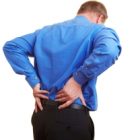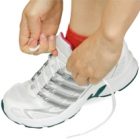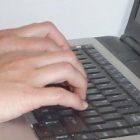Most people give little thought to the health of their feet, but it is estimated we walk about 150,000 miles in a lifetime. An American study called “If the shoe fits, wear it” found that nine out of ten women wear shoes that are too small. As you get older, your feet tend to spread, but few people get their feet measured after the age of 20.
A visit to a Podiatrist can help ensure your feet stay healthy. They can help with:
- essential foot care including foot exercises and advice on correct shoe fitting
- vascular and neurological assessment and wound management, which is often associated with diabetes
- gait analysis
- detecting arthritis, diabetes, nerve and circulatory disorders as the initial symptoms of these conditions are often in the feet
- backache, headaches and indigestion as these can sometimes be traced to problems with your feet
Treatment obviously depends on the presenting problem, but can involve:
- a lower limb assessment
- advice on dry skin and general foot health
- cutting of nails
- padding and strapping
- reduction of calluses (hard skin) and corns
- treatment of verrucae
- trimming down thickened nails
Podiatrists work closely with other healthcare professionals such as Doctors, Physiotherapists, Nurses and Osteopaths to ensure the patient receives the correct treatment for their problem.
The type of patient a Podiatrist may see includes:
- a teenager with an in-growing toenail that needs reducing
- wound care for a diabetic patient who has an ulcer on their foot
- an elderly or disabled person unable to reach their own feet who requires essential foot care such as toenail cutting
The health of your feet is critical to your mobility and can have a direct effect on your general well being. Podiatrists can treat a wide variety of foot conditions (see under Treatable Conditions – Podiatry / Chiropody) and people of all ages.
CASE HISTORY
Patient: 47-year-old female
Presenting symptoms: Pain experienced on the heels of both feet which was worse first thing in the morning and following periods of rest.
Previous History: No history of trauma, symptoms developed following an increase in activity levels when training for an event.
Evaluation: Symptoms suggested plantar fasciitis and palpation of the heel and the sole of the foot confirmed the diagnosis. A biomechanical evaluation was also carried out to determine foot function and if any orthotics (shoe inserts) would be required.
Treatment: Taping of the feet to reduce tension in the affected soft tissue structure, ultrasound to improve tissue repair and suitable stretching exercises given. A routine podiatry treatment to remove hard skin and cut the toenails was also done. A reassessment, carried out one-month later, showed reduction in pain levels and increased mobility.
Please feel free to contact us if you wish to discuss further whether we can help you.








